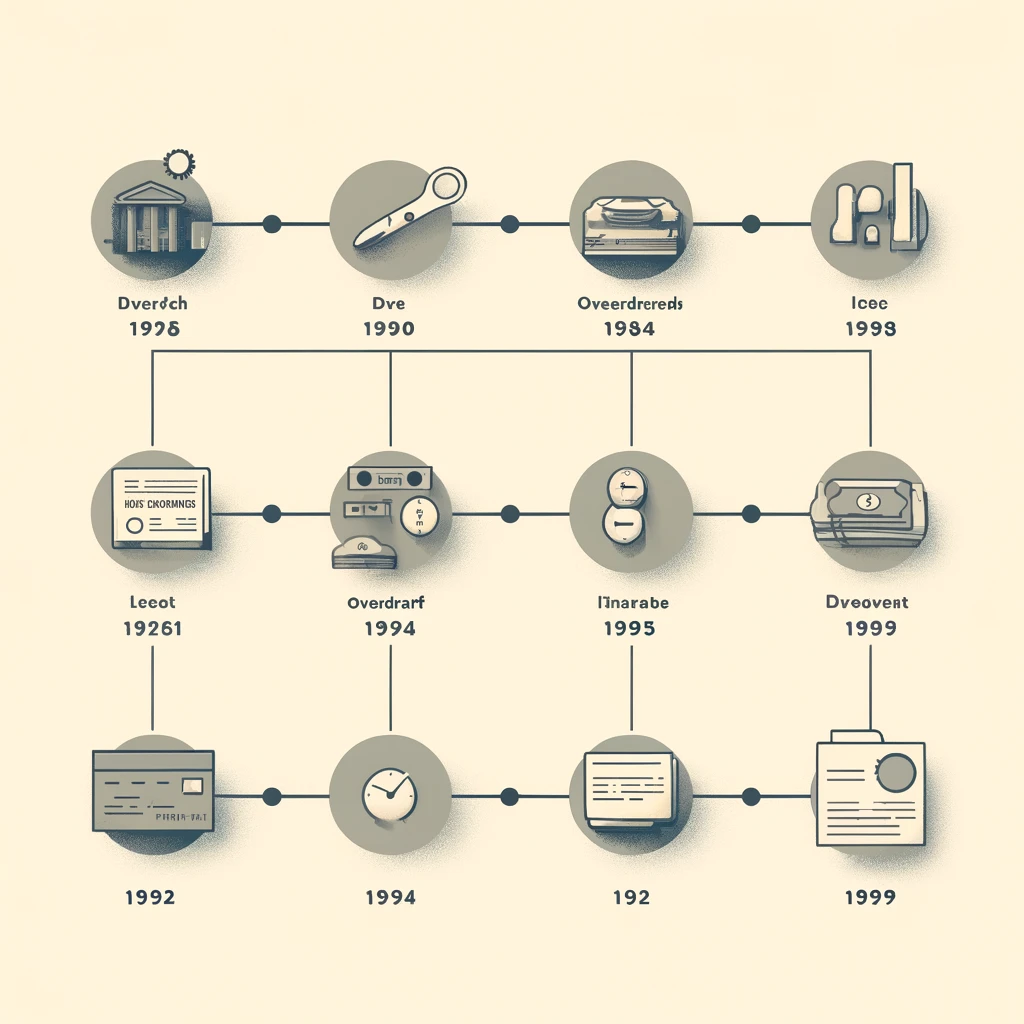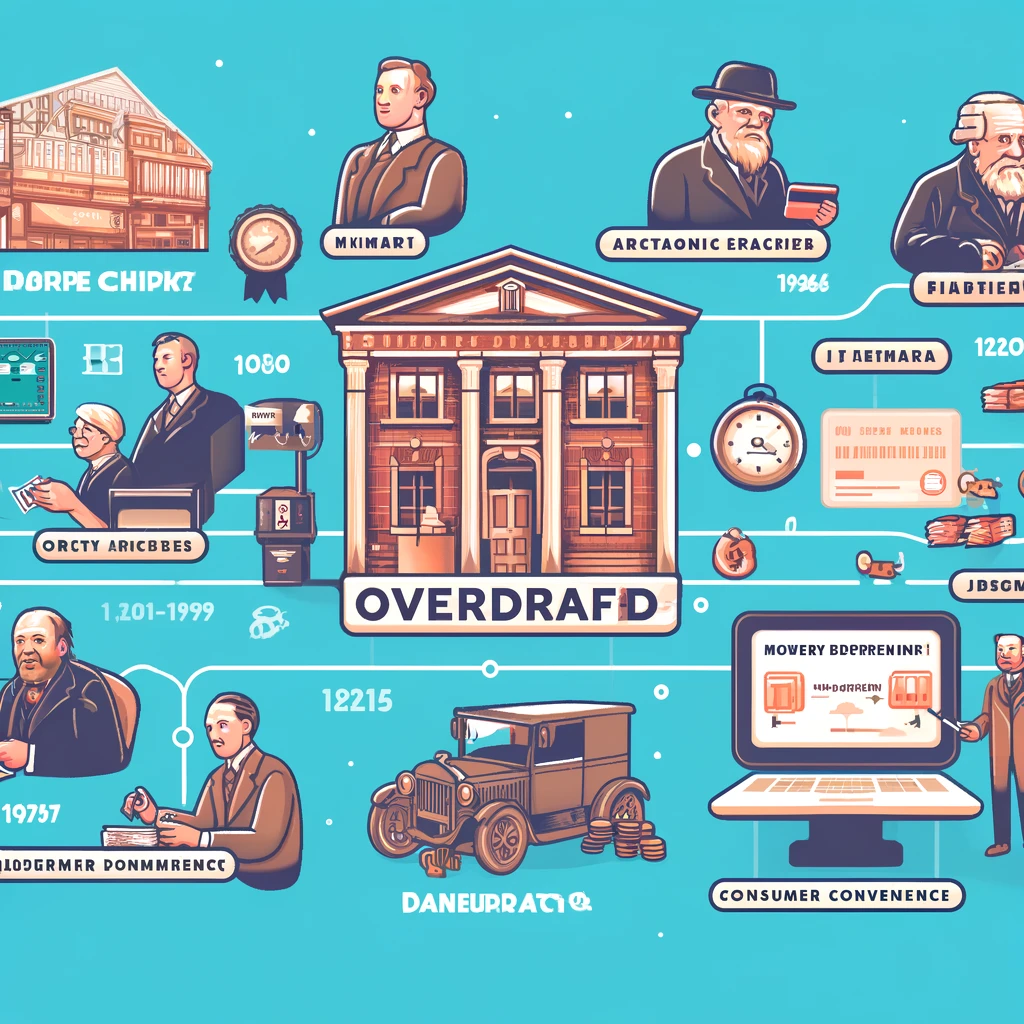Overdrafts have become a common financial tool, providing consumers with flexibility and a safety net for managing their finances. However, the concept of overdrawing an account has a history that dates back centuries. What began as a privilege for a select few has evolved into a widely accessible service that benefits millions of consumers around the world. This article explores the history of overdrafts, tracing their development from early banking practices to the convenient financial tools we use today.
The Origins of Overdrafts
Early Banking and Credit
The concept of overdrawing an account is closely tied to the origins of banking and credit. As early as the medieval period, merchants and wealthy individuals used informal credit arrangements with goldsmiths and moneylenders. These early financial institutions would allow trusted clients to borrow funds, often without the need for immediate repayment.
The Birth of Modern Banking
Modern banking practices began to take shape in the 17th century, particularly in England. The Bank of England, established in 1694, played a crucial role in formalizing banking practices, including the extension of credit. However, the concept of an overdraft as we know it today did not fully emerge until the 18th century.
The 18th Century: The First Overdrafts
The Case of Josiah Wedgwood
One of the earliest recorded instances of an overdraft involved the famous English potter Josiah Wedgwood. In 1778, Wedgwood approached his bank, the Royal Bank of Scotland, for financial assistance. Instead of providing a traditional loan, the bank allowed Wedgwood to overdraw his account. This arrangement enabled Wedgwood to access funds as needed, up to an agreed limit, without the formalities of a loan.
Bankers’ Privilege
During the 18th and 19th centuries, overdrafts remained a privilege reserved for wealthy individuals and influential business clients. Banks extended overdraft facilities based on personal relationships and trust, allowing favored customers to overdraw their accounts within negotiated limits. These early overdrafts were informal and relied heavily on the banker’s discretion.
The 19th Century: Formalizing Overdrafts
Industrial Revolution and Economic Expansion
The Industrial Revolution brought significant economic expansion and increased the demand for flexible financial services. As businesses grew and required more capital, banks began to formalize the concept of overdrafts. They established clearer terms and conditions for overdraft facilities, making them more accessible to a broader range of customers.
The Role of Banks
Banks played a pivotal role in the formalization of overdrafts during the 19th century. They developed standardized agreements that outlined the terms of overdraft facilities, including interest rates, fees, and repayment conditions. This shift helped transform overdrafts from informal arrangements into recognized financial products.
The 20th Century: Overdrafts for the Masses
Post-War Economic Growth
The post-World War II era saw significant economic growth and an expansion of the middle class. As consumer banking became more widespread, banks began to offer overdraft facilities to a larger segment of the population. The democratization of overdrafts marked a significant shift from their earlier status as a privilege for the elite.
Technological Advancements
Technological advancements in banking during the 20th century further facilitated the widespread adoption of overdrafts. The introduction of computerized banking systems and ATMs made it easier for banks to manage overdraft facilities and for customers to access funds. This period also saw the rise of consumer credit, with overdrafts becoming a key component of personal finance.
Regulatory Changes
Regulatory changes in various countries helped shape the overdraft market. Governments and financial regulators introduced rules to protect consumers from excessive fees and unfair practices. These regulations aimed to ensure transparency and fairness in the provision of overdraft facilities, contributing to their widespread acceptance.
The Modern Era: Overdrafts Today
Widespread Accessibility
Today, overdrafts are a common feature of checking accounts offered by banks and credit unions worldwide. They provide consumers with a convenient way to manage short-term cash flow issues and cover unexpected expenses. The accessibility of overdrafts has transformed them into a valuable financial tool for millions of people.

Digital Banking and Innovation
The rise of digital banking and fintech innovations has further revolutionized overdrafts. Mobile banking apps and online banking platforms allow customers to monitor their account balances in real-time, receive alerts when they are nearing their overdraft limits, and manage their finances more effectively. Some fintech companies offer innovative overdraft solutions with lower fees and flexible terms, challenging traditional banking models.
Responsible Use and Consumer Protection
Despite their benefits, overdrafts can lead to financial difficulties if not used responsibly. High fees and interest rates, particularly for unauthorized overdrafts, can quickly add up, leading to a cycle of debt. As a result, financial institutions and regulators continue to emphasize responsible use and transparency.
Efforts to Reduce Overdraft Fees
In recent years, there has been a growing movement to reduce or eliminate overdraft fees. Some banks have introduced fee-free overdraft options or lower fees, while others offer alternative products to help customers manage their finances without resorting to overdrafts. These efforts aim to provide consumers with more affordable and sustainable financial solutions.
The Future of Overdrafts
Integration with Fintech
The integration of overdrafts with fintech solutions is likely to continue shaping their future. Fintech companies are leveraging data analytics, artificial intelligence, and machine learning to offer personalized overdraft solutions tailored to individual financial behaviors. These innovations can help consumers manage their finances more effectively and avoid unnecessary fees.
Enhanced Consumer Protection
As the financial landscape evolves, there will likely be increased emphasis on consumer protection. Regulators may introduce stricter guidelines to ensure that overdraft facilities are transparent, fair, and affordable. Enhanced consumer protection measures can help prevent financial distress and promote responsible borrowing.
Sustainable Banking Practices
Sustainable banking practices are gaining traction, with a focus on providing ethical and socially responsible financial products. Overdrafts are no exception, and there is a growing trend toward offering overdraft solutions that align with sustainable banking principles. This includes fair pricing, clear terms, and support for customers facing financial difficulties.

Conclusion
The history of overdrafts reflects the broader evolution of banking and financial services. From their origins as a privilege for wealthy clients to their current status as a widely accessible financial tool, overdrafts have undergone significant transformations. Today, they offer consumers flexibility and convenience, helping them manage short-term financial needs and unexpected expenses.
















Leave a comment